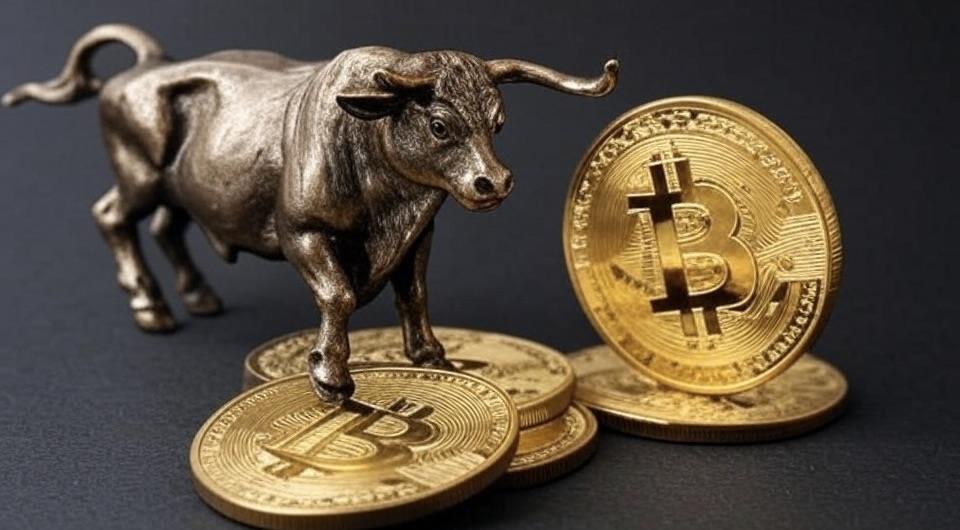Hashrate and hype at all time highs
Bitcoin is kicking off 2025 in a strong position, buoyed by robust underlying metrics. The network’s hash rate is at a record high - greater than the combined computing power of Amazon AWS, Google Cloud, and Microsoft Azure by orders of magnitude. Meanwhile, on-chain wallet addresses holding at least $100 or $1,000 in bitcoin have climbed to all-time highs.
Institutions also refuse to be left behind. U.S.-traded ETFs more than doubled their combined bitcoin holdings, jumping from 650,000 to 1,250,000 BTC in just one year. Tether made its largest purchase since early 2024, adding over 7,600 BTC to its reserves, and MicroStrategy added another 2,138 BTC.
Global adoption is similarly accelerating. El Salvador’s holdings surpassed 6,000 BTC, while lawmakers in Hong Kong propose adding bitcoin to the city’s reserves. Even proposals for a possible U.S. strategic bitcoin reserve are gathering momentum under a new administration promising to ease regulations and build up a national stockpile.
Meanwhile, a cratering bond market in China signals that the world's central banks may soon fire up their money printers, which has historically correlated to rapid increases in the bitcoin-dollar exchange rate.
All these factors suggest the bull market likely has gas in the tank. As we enter the new year, current momentum (and data) signals that 2025 could bring heights few expected just a year or two ago.
NEWS
Asset managers file a flurry of new bitcoin ETF proposals
An avalanche of new bitcoin ETF proposals landed in the past week, with Strive, Bitwise, REX, and ProShares each announcing specialized products targeting everything from convertible bonds to hedged S&P 500 positions.
Strive Bitcoin Bond ETF focuses on “Bitcoin Bonds,” which are convertible notes issued by companies like MicroStrategy. This approach allows investors to gain indirect bitcoin exposure and a potential fixed-income yield, positioning convertible debt as a novel on-ramp to the bitcoin ecosystem.
Bitwise Bitcoin Standard Corporations ETF plans to hold shares of public companies with at least 1,000 BTC in their treasuries—led by MicroStrategy, Tesla, and a handful of major bitcoin miners. By bundling these bitcoin-heavy corporations into one fund, Bitwise seeks to give investors streamlined exposure to businesses that treat bitcoin as a strategic reserve.
Meanwhile, BlackRock’s IBIT Fund has soared to over $50 billion in assets in just 11 months, cementing its status as the “greatest launch in ETF history” and demonstrating how wild 2025 could be for bitcoin-focused funds.
NYDIG explores new bitcoin lending product
NYDIG, a Stone Ridge subsidiary offering bitcoin-backed loans, is taking a page from insurance giant Berkshire Hathaway by looking to tap “float” (insurance premiums held in reserve) as a financing source. Stone Ridge CEO Ross Stevens published his annual investor letter with a deep analysis of the new loan product. The entire letter is an exceptional read.
Theoretically, NYDIG's strategy would reduce borrowing costs, keep bitcoin off exchanges, and spark a new wave of large-scale BTC lending. Marathon Digital advisor Sam Callahan calls the move a “big deal,” arguing it will unlock a vast pool of capital and further solidify bitcoin’s position as a premier form of loan collateral.
Morgan Stanley’s E-Trade plans to roll out direct bitcoin trading
Morgan Stanley’s E-Trade plans to let users buy and sell bitcoin directly on its platform, seizing on pro-bitcoin signals from the incoming Trump administration. This marks a major pivot for a traditional brokerage to compete head-on with bitcoin and altcoin exchanges.
Having acquired E-Trade for $13 billion in 2020, Morgan Stanley is now tapping the brand’s 5+ million active users to drive broader bitcoin adoption – and embed the asset ever deeper into mainstream finance.
BITCOIN ADOPTION CONTINUES
A new initiative aims to require the Swiss National Bank to hold part of its reserves in bitcoin and gold, potentially leading to a public referendum if enough signatures are gathered.
Franklin Templeton predicts more nations will adopt bitcoin reserves in 2025, with leaders in Germany and Hong Kong already signaling interest.
Hive Digital is relocating its headquarters from Vancouver to Texas, citing Donald Trump’s pro-bitcoin stance and the state’s favorable climate for mining.
Galaxy Research predicts bitcoin could reach around $185,000 in 2025, driven by adoption from institutions, corporations, and nation states.
Tether has increased its bitcoin holdings to 82,983 BTC with a $700 million purchase, continuing to strengthen its reserves.
HOW BITCOIN WORKS
Learn one key idea about bitcoin each week. This week:
Is bitcoin fiat?
Bitcoin Magazine editor Shinobi argues that bitcoin is, in fact, fiat. His reasoning hinges on the definition of “fiat” as money conferred value through an authoritative decree.
While it’s easy to think of fiat as purely government-backed, Shinobi contends that bitcoin’s “authority” is actually the collective of its users. There is no king or central bank, but a broad, decentralized network decides which protocol to follow and why. In Shinobi’s view, bitcoin lacks any separate use-value: it isn’t a physical commodity, and its worth comes solely from the collective decision that it should have worth. By that logic, it’s “stateless fiat.”
Economist George Selgin, by contrast, calls bitcoin a “synthetic commodity money.” Unlike government fiat, which can be created at will, bitcoin’s supply is controlled algorithmically, more like a scarce resource than a currency minted on demand. Though bitcoin itself has no industrial or ornamental use, Selgin argues that its inelastic, rule-based issuance schedule emulates characteristics of a commodity standard – hence the term “synthetic.” It isn’t enforced by government, but by the underlying code and consensus rules that set its maximum supply.
Whether bitcoin falls under Shinobi’s “digital fiat” or Selgin’s “synthetic commodity” umbrella, it remains a uniquely scarce, borderless medium of exchange. It boasts all the essential properties of money including divisibility, portability, durability, recognizability, and limited supply. Debate over its exact label doesn’t diminish bitcoin’s innovation or rising economic influence.
Bitcoin’s originator, Satoshi Nakamoto, continues to hold a famously large stash of early-mined coins. Even if Satoshi is already deceased or never spends a single sat, they could still become (or have been) the wealthiest individual in history – a fitting reward for someone who invented the greatest form of money the world has ever seen.
COIN CHECK
In which year did Bitcoin first surpass $1 in value on a public exchange?
2009
2011
2013
2008
Check your answer at the end of the page.
FROM THE MEME POOL
ANSWER
In early 2011, just before bitcoin crossed the $1 mark, the network was still relatively obscure, and most trading happened through informal person-to-person exchanges and niche forums. The biggest push toward $1 took place when Mt. Gox, by then the most prominent marketplace for bitcoin, started to attract a wider audience of enthusiasts. Once it crossed $1, bitcoin gained even more attention, and over the following months its price climbed to around $30 by the summer.
If you found this post informative, consider subscribing to our weekly newsletter. Each issue features the same type of in-depth analysis and thought-provoking content, ensuring you stay up-to-date on the latest developments in geopolitics, finance, and more.
NEVER MISS THE NEWS THAT MATTERS MOST
ZEROHEDGE DIRECTLY TO YOUR INBOX
Receive a daily recap featuring a curated list of must-read stories.
Trending on ZeroHedge

CNN Stunned As Majority Of Americans Back Trump's Mass Deportation Plan

US Support For Israel Comes At A Staggering, Multifaceted Price







